
Bariloche: The Swiss Alps of South America
Discover Bariloche: Argentina's premier destination for outdoor adventures, stunning landscapes, and delightful cuisine nestled in the Andes.
Bariloche, a picturesque city nestled in the foothills of the Andes, is a must-visit destination for nature lovers and adventure seekers alike. Known for its stunning landscapes, Bariloche offers a backdrop of snow-capped mountains, crystal-clear lakes, and dense forests. The city is famous for its Swiss alpine-style architecture, giving it a unique charm that sets it apart from other Argentine cities. During the winter months, Bariloche transforms into a winter wonderland, attracting skiers and snowboarders from around the globe. The Cerro Catedral ski resort is one of the largest in South America, offering a wide range of slopes for all skill levels. In the summer, the region becomes a haven for hikers, mountain bikers, and water sports enthusiasts. The array of outdoor activities ensures that there is something for everyone, no matter the season. Bariloche is also renowned for its culinary delights. The city is a paradise for chocolate lovers, with numerous artisanal chocolate shops lining the streets. Don't miss the chance to try traditional Argentine dishes at one of the many local restaurants. The vibrant nightlife and warm hospitality of the locals make Bariloche a welcoming and enjoyable place to visit. Beyond its natural beauty and recreational opportunities, Bariloche boasts a rich cultural heritage. The city's museums and cultural centers offer insights into the history and traditions of the region. Whether you're seeking adventure, relaxation, or a cultural experience, Bariloche has it all.
Local tips in Bariloche
- Visit during the shoulder seasons of spring (October-November) and fall (March-April) for fewer crowds and milder weather.
- Rent a car to explore the scenic Seven Lakes Route, which offers breathtaking views and numerous photo opportunities.
- Try the local chocolates; Mamuschka and Rapa Nui are two of the most famous chocolate shops in the city.
- Book your ski passes and accommodations well in advance if you plan to visit during the peak winter months (July-August).
- Take a boat trip on Lake Nahuel Huapi to visit Isla Victoria and the Arrayanes Forest for a unique nature experience.
Neighbourhoods in Bariloche
Bariloche: The Swiss Alps of South America
Bariloche, a picturesque city nestled in the foothills of the Andes, is a must-visit destination for nature lovers and adventure seekers alike. Known for its stunning landscapes, Bariloche offers a backdrop of snow-capped mountains, crystal-clear lakes, and dense forests. The city is famous for its Swiss alpine-style architecture, giving it a unique charm that sets it apart from other Argentine cities. During the winter months, Bariloche transforms into a winter wonderland, attracting skiers and snowboarders from around the globe. The Cerro Catedral ski resort is one of the largest in South America, offering a wide range of slopes for all skill levels. In the summer, the region becomes a haven for hikers, mountain bikers, and water sports enthusiasts. The array of outdoor activities ensures that there is something for everyone, no matter the season. Bariloche is also renowned for its culinary delights. The city is a paradise for chocolate lovers, with numerous artisanal chocolate shops lining the streets. Don't miss the chance to try traditional Argentine dishes at one of the many local restaurants. The vibrant nightlife and warm hospitality of the locals make Bariloche a welcoming and enjoyable place to visit. Beyond its natural beauty and recreational opportunities, Bariloche boasts a rich cultural heritage. The city's museums and cultural centers offer insights into the history and traditions of the region. Whether you're seeking adventure, relaxation, or a cultural experience, Bariloche has it all.
When is the best time to go to Bariloche?
Iconic landmarks you can’t miss
Parque Nacional Nahuel Huapi
Explore Argentina's breathtaking Parque Nacional Nahuel Huapi, a paradise of lakes, mountains, and diverse wildlife for nature lovers and adventure seekers.

Confitería del Cerro Campanario
Discover the breathtaking views and delectable offerings at Confitería del Cerro Campanario, a must-visit café in San Carlos de Bariloche.
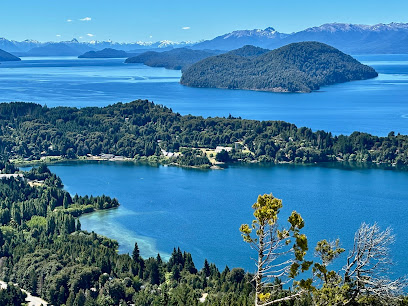
Manush Centro
Discover the vibrant world of craft beer at Manush Centro, the heart of San Carlos de Bariloche's brewpub scene, where flavor meets fun.
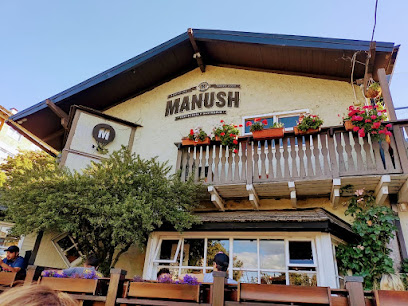
Puerto Pañuelo
Explore Puerto Pañuelo, the scenic marina in Bariloche, offering breathtaking views and adventures on Lake Nahuel Huapi in the heart of Patagonia.
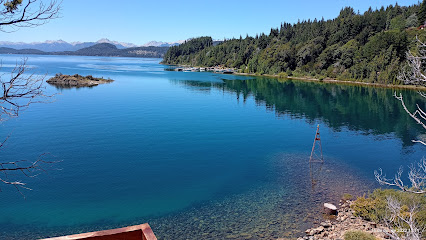
Catedral Alta Patagonia
Explore the breathtaking Catedral Alta Patagonia, Argentina's premier ski resort offering thrilling slopes, stunning views, and unforgettable winter adventures.
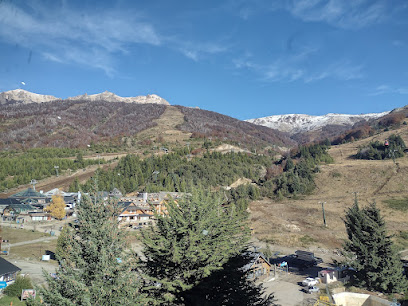
La Fonda del Tío
Experience authentic Argentine flavors at La Fonda del Tío in San Carlos de Bariloche, where every bite tells a story of local tradition and culinary excellence.

Kunstmann
Discover the art of brewing at Kunstmann Brewpub in Bariloche, where local flavors and breathtaking views come together in a perfect blend.
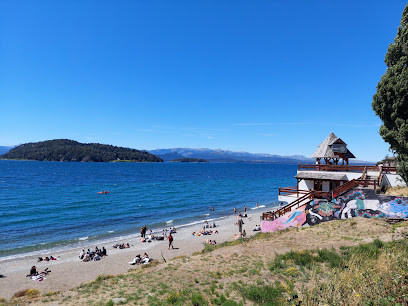
Punto Panorámico - Circuito Chico
Discover breathtaking views and capture the beauty of Patagonia at Punto Panorámico on Circuito Chico in San Carlos de Bariloche.
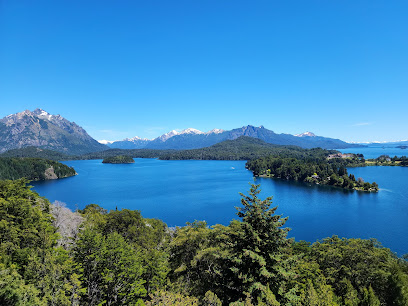
El Boliche de Alberto
Experience the authentic tastes of Argentina at El Boliche de Alberto in Bariloche, where every dish tells a story of tradition and flavor.
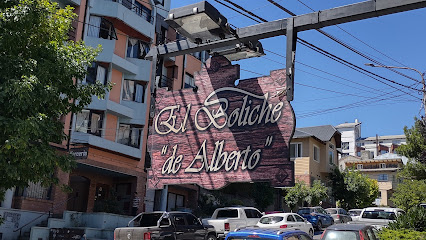
Familia Weiss
Discover the authentic flavors of Argentina at Familia Weiss, a dining destination in San Carlos de Bariloche that offers exquisite cuisine in a charming atmosphere.
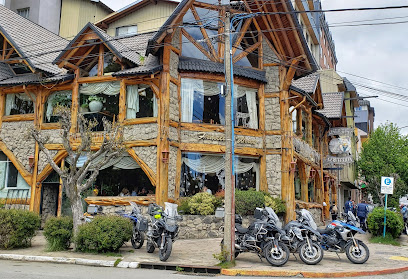
Centro Cívico Bariloche
Explore the vibrant Centro Cívico in Bariloche, where culture meets stunning natural beauty in the heart of Patagonia.
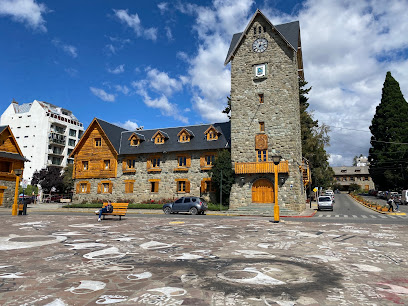
Cathedral Our Lady of Nahuel Huapi
Discover the breathtaking beauty and architectural brilliance of the Cathedral of Our Lady of Nahuel Huapi in picturesque Bariloche, Argentina.
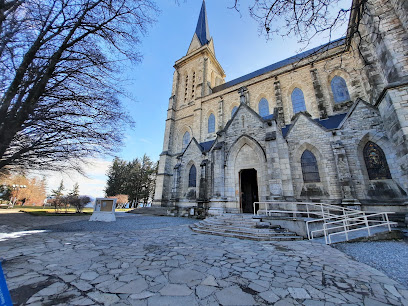
Museo del Chocolate Havanna
Discover the rich history and delightful flavors of chocolate at Museo del Chocolate Havanna in Bariloche, a sweet escape for all chocolate lovers.
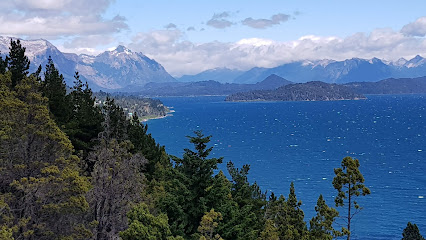
Manush km 4
Discover the vibrant flavors of Bariloche at Manush km 4, a must-visit brewpub offering craft beers and delicious local cuisine in a warm atmosphere.
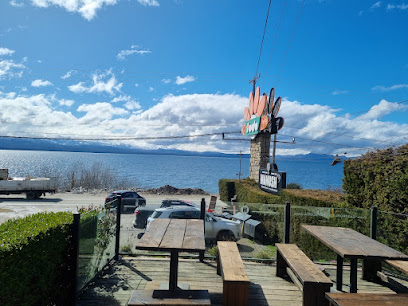
Parque Nahuelito
Discover Parque Nahuelito, a thrilling theme park in San Carlos de Bariloche, where dinosaurs come to life amidst stunning natural beauty.
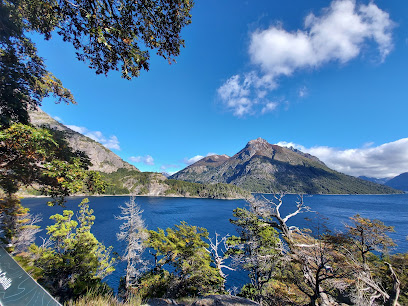
Unmissable attractions to see
Parque Nacional Nahuel Huapi
Explore the mesmerizing landscapes, rich biodiversity, and adventure opportunities of Parque Nacional Nahuel Huapi, a must-visit destination in Patagonia, Argentina.
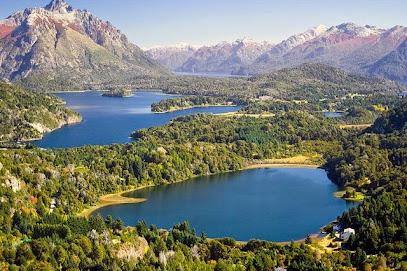
Puerto Pañuelo
Experience the breathtaking beauty of Puerto Pañuelo, a serene marina in San Carlos de Bariloche, the gateway to Patagonia's stunning landscapes.
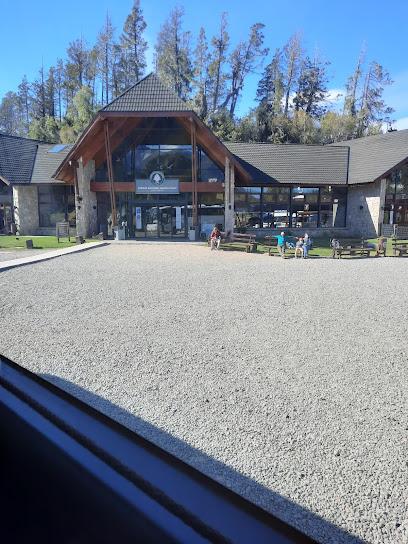
Catedral Alta Patagonia
Experience the thrill of skiing at Catedral Alta Patagonia, a top ski resort in San Carlos de Bariloche with stunning views and diverse winter activities.
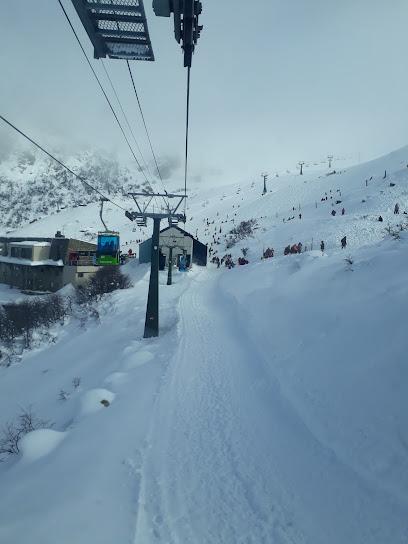
Parque Nacional Los Arrayanes
Explore the enchanting Parque Nacional Los Arrayanes, where unique Arrayán trees meet stunning landscapes in a tranquil national park experience.
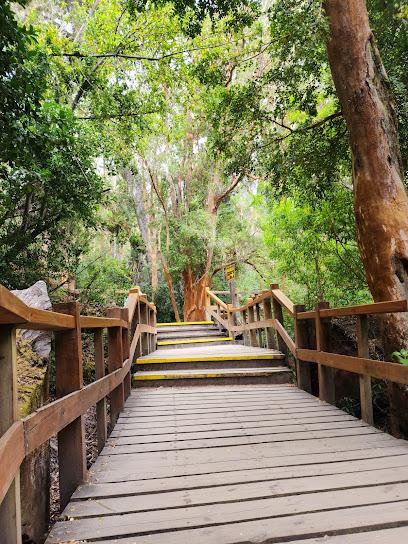
Punto Panorámico - Circuito Chico
Experience stunning panoramic views at Punto Panorámico in San Carlos de Bariloche, a must-visit stop on your Argentine Patagonia adventure.
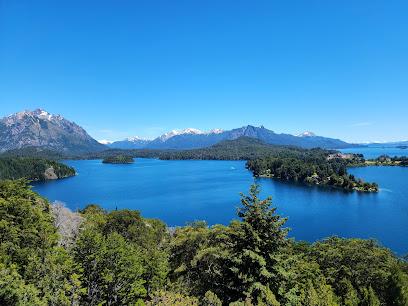
Cathedral Our Lady of Nahuel Huapi
Explore the breathtaking Cathedral Our Lady of Nahuel Huapi in Bariloche, where Gothic architecture meets stunning natural beauty.

Ventisquero Negro
Explore the breathtaking beauty of Ventisquero Negro in San Carlos de Bariloche—an unforgettable hiking experience in the heart of Patagonia.
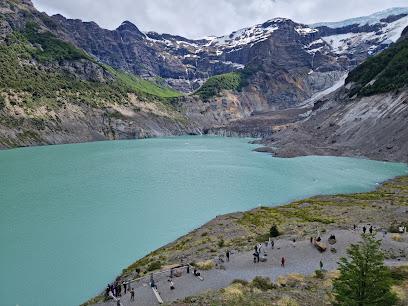
Aerosilla Cerro Campanario
Discover the breathtaking views of Lake Nahuel Huapi and the Andes at Cerro Campanario, a must-visit mountain cable car experience in San Carlos de Bariloche.
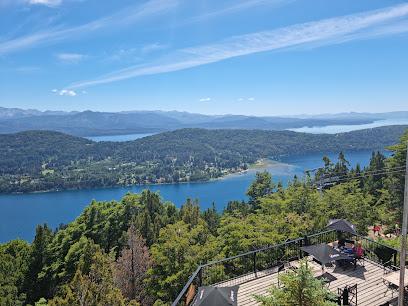
Muelle Lago Escondido
Experience breathtaking views and serene nature at Muelle Lago Escondido, a hidden gem in Río Negro Province, Argentina.
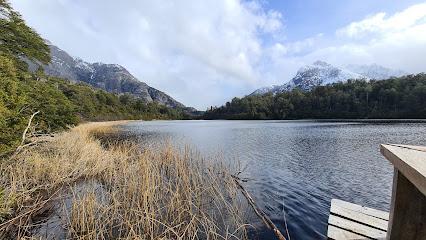
Cerro Bayo Ski Boutique
Discover the thrill of skiing in the breathtaking landscapes of Cerro Bayo Ski Boutique in Villa La Angostura, Neuquén Province.
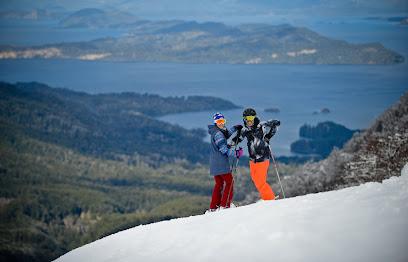
Base del Cerro Catedral
Experience the breathtaking beauty and thrilling outdoor adventures at the Base del Cerro Catedral in Río Negro Province, Argentina.
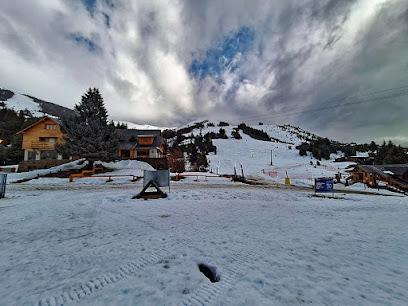
Bahía Serena
Discover the tranquil beauty of Bahía Serena in San Carlos de Bariloche, where stunning lake views meet the majestic Andes mountains.
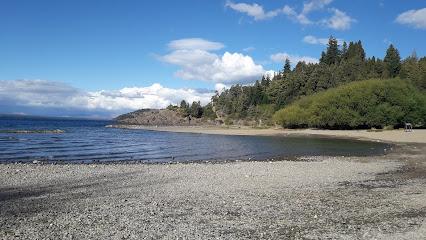
Mirador Lago Gutierrez
Explore the stunning vistas of Lago Gutierrez at Mirador Lago Gutierrez, a must-see observation deck in San Carlos de Bariloche's breathtaking landscapes.
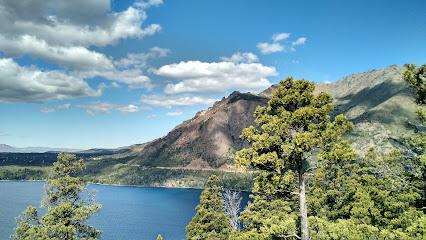
Parroquia San Eduardo
Explore the peaceful ambiance of Parroquia San Eduardo in Villa Llao Llao, a stunning church surrounded by breathtaking landscapes and rich culture.
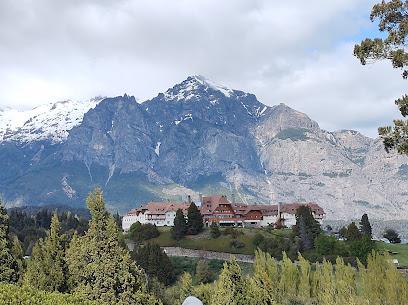
Nahuel Huapi Lake
Discover the breathtaking landscapes and outdoor adventures at Nahuel Huapi Lake, a must-visit destination in Argentina's Patagonia region.
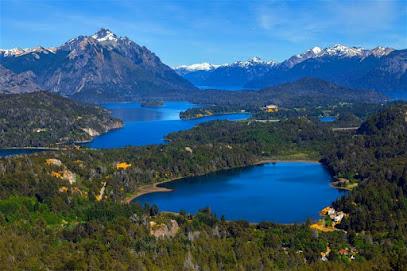
Essential places to dine
Manush Centro
Discover the essence of Bariloche's craft beer scene at Manush Centro - where great brews meet gourmet bites.
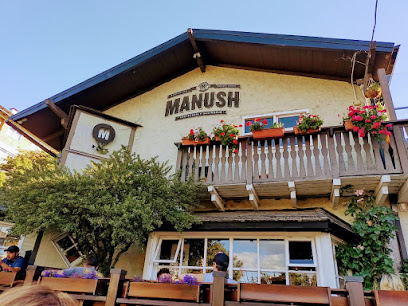
La Fonda del Tío
Discover authentic Argentine cuisine at La Fonda del Tío in Bariloche—where every meal is a celebration of local flavors.
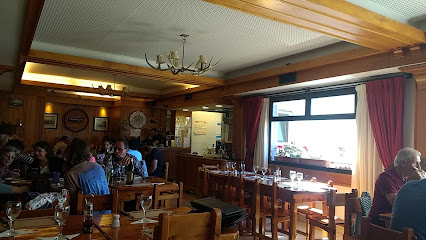
Kunstmann
Experience the finest craft beers and delectable Argentine cuisine at Kunstmann Brewpub in scenic San Carlos de Bariloche.
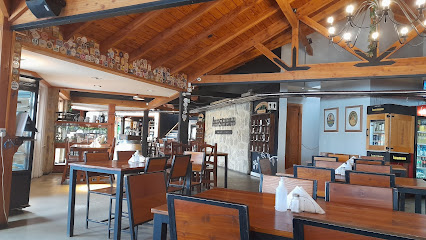
Familia Weiss
Experience the exquisite flavors of Patagonia at Familia Weiss, San Carlos de Bariloche’s premier dining destination.
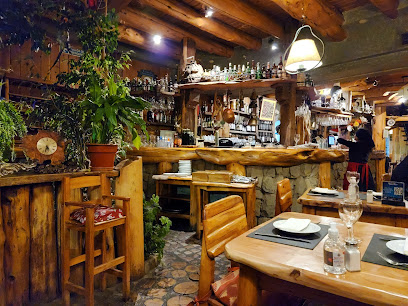
Friends
Experience the essence of American cuisine blended with local flavors at Friends Grill in San Carlos de Bariloche.
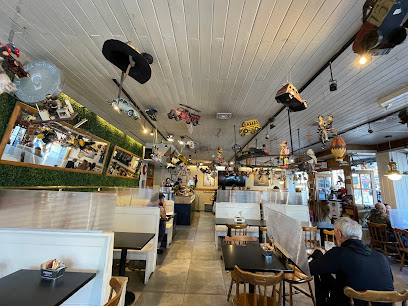
Trattoria L' Italiano
Savor authentic Italian flavors in San Carlos de Bariloche at Trattoria L' Italiano – where every dish tells a story.
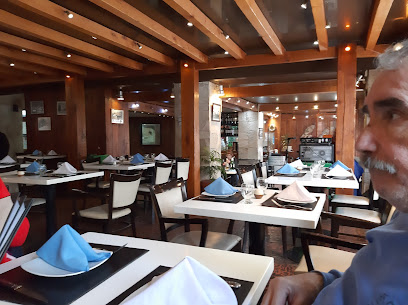
Mexicano Café
Experience the vibrant flavors of Mexico at Mexicano Café in San Carlos de Bariloche – where every meal is a fiesta!
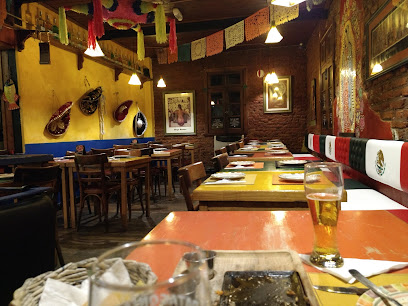
El Boliche de Alberto Pastas
Experience authentic homemade pasta in San Carlos de Bariloche at El Boliche de Alberto Pastas - a culinary delight not to be missed.
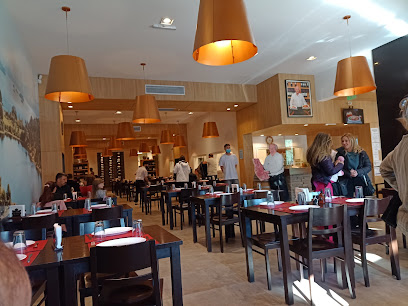
Breogan
Experience authentic Spanish cuisine at Breogan in Bariloche – where every dish tells a story of tradition and flavor amidst stunning mountain views.
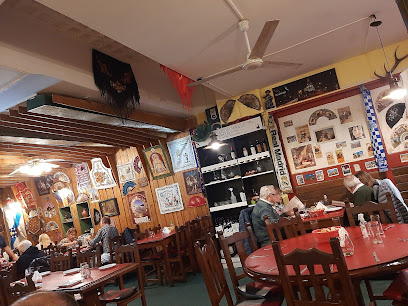
La Alpina Restaurante
Experience authentic Argentine cuisine at La Alpina Restaurante in San Carlos de Bariloche - where local flavors meet cozy ambiance.
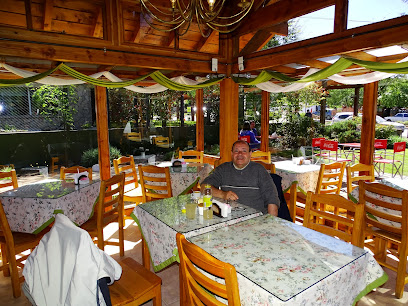
La Marmite
Experience exceptional Argentine cuisine at La Marmite in San Carlos de Bariloche – where every meal is a celebration of flavor.
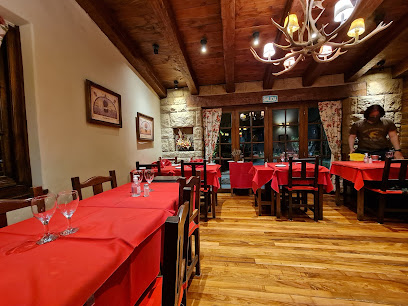
El Patacón
Experience authentic Argentine cuisine at El Patacón in San Carlos de Bariloche—where flavor meets breathtaking views.
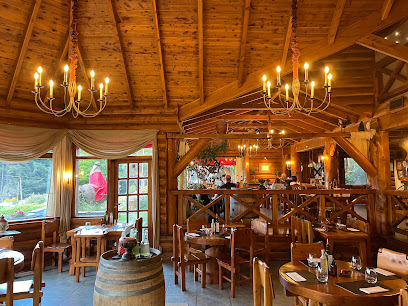
Rincón Patagónico
Experience the rich flavors of Argentinian cuisine amidst breathtaking Patagonian landscapes at Rincón Patagónico.
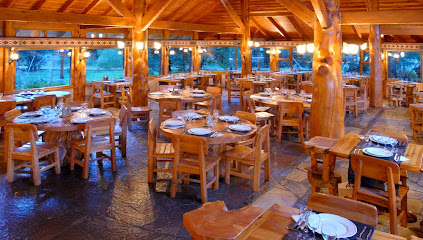
Alto El Fuego - Centro
Experience the best Argentinian grill at Alto El Fuego in San Carlos de Bariloche – where every bite tells a story.

El Galpón de Salo
Discover authentic Argentine flavors at El Galpón de Salo in San Carlos de Bariloche - where every meal tells a story.
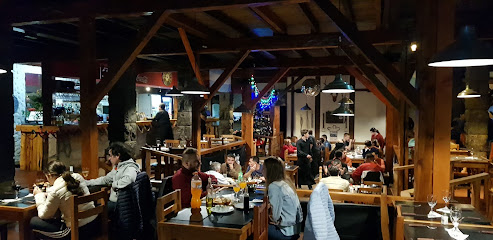
Markets, malls and hidden boutiques
Rapanui
Discover the delectable world of Rapanui, a chocolate shop in San Carlos de Bariloche offering artisanal chocolates, ice creams, and a cozy café experience.

Mamuschka
Experience the sweet perfection of Mamuschka, Bariloche's premier chocolate café, offering artisanal delights in a cozy atmosphere.

Delturista
Discover the heavenly flavors of chocolate and ice cream at Delturista, San Carlos de Bariloche's premier chocolate cafe.
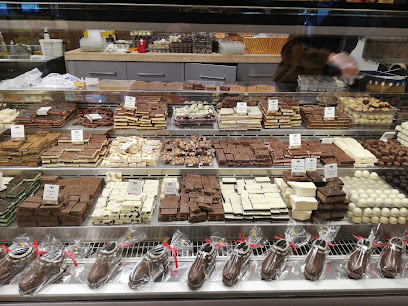
Shopping Patagonia
Explore Shopping Patagonia in Bariloche for a blend of retail therapy, local culture, and entertainment in a stunning mountain backdrop.
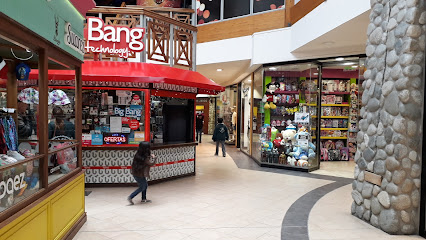
Galeria del sol bariloche
Discover high-end shopping and unique local crafts at Galeria del Sol in San Carlos de Bariloche, a must-visit destination for discerning travelers.

Frantom
Discover the sweet delights of Frantom, the premier chocolate shop in San Carlos de Bariloche offering handcrafted chocolates and irresistible treats.
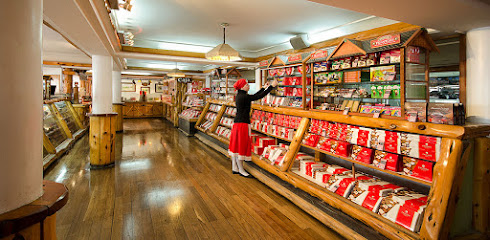
The Chocolate kingdom
Explore The Chocolate Kingdom in San Carlos de Bariloche for an unforgettable chocolate experience in Patagonia's scenic beauty.
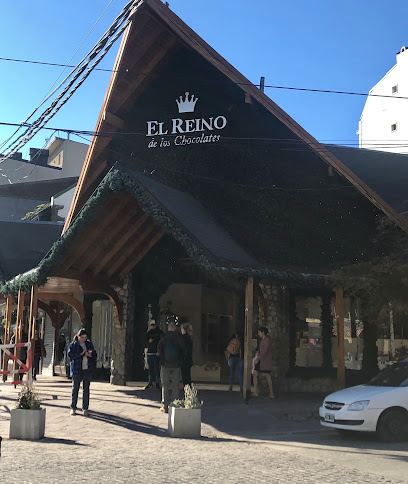
Handicrafts The Coihue
Discover the artistry of Argentina at Handicrafts The Coihue, where unique handmade crafts and cake decorating supplies await in scenic Bariloche.
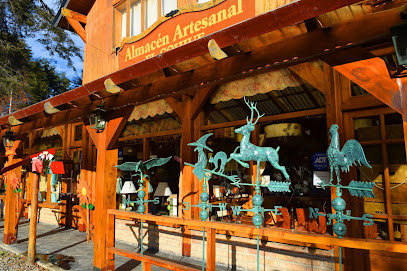
Colectivo de Diseño
Explore Colectivo de Diseño in San Carlos de Bariloche for exquisite handcrafted gifts and a taste of local artistry in Patagonia.
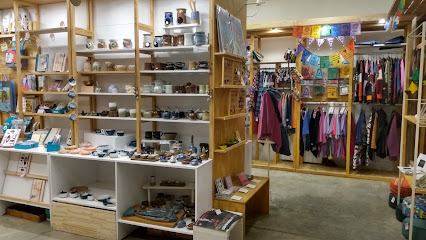
Montagne
Discover Montagne in Bariloche for top-notch camping gear and stylish outdoor clothing, perfect for your Patagonian adventures.

Pampa Linda Bags & Accesories
Discover unique fashion accessories at Pampa Linda Bags & Accessories in Bariloche, where Argentine craftsmanship meets modern style.
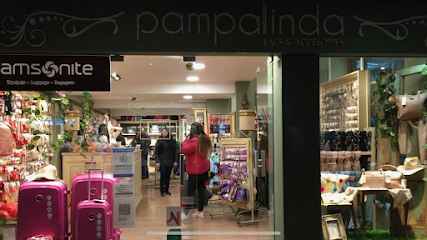
Garmont
Explore the great outdoors with Garmont, your premier outdoor sports store in Bariloche, offering gear and classes for all adventure seekers.

SUMMIT = Patagonia & Rab & Timberland & Burton & Volcom & Rip Curl & Oneill & Trown & Opiparo & Lado B
Summit in Bariloche: Your go-to store for top outdoor brands like Patagonia, Burton, and Timberland, ensuring you're ready for any adventure.
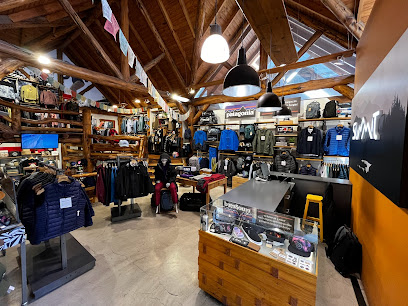
Riche Patagonia
Discover the exquisite flavors of Patagonia at Riche Patagonia, a chocolate shop in San Carlos de Bariloche offering artisanal delights and gourmet treats.
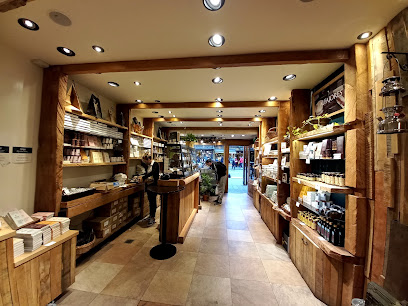
Baruzzi
Discover Baruzzi, a premier fishing store in San Carlos de Bariloche, where expert advice and quality gear meet the breathtaking beauty of Patagonia.
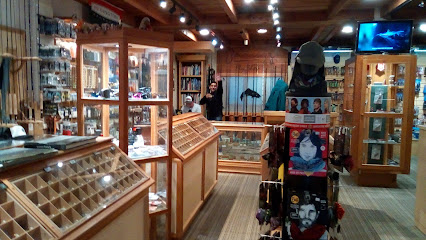
Essential bars & hidden hideouts
Manush Centro
Discover the essence of Bariloche at Manush Centro, where craft beer meets exquisite local cuisine in a vibrant atmosphere.
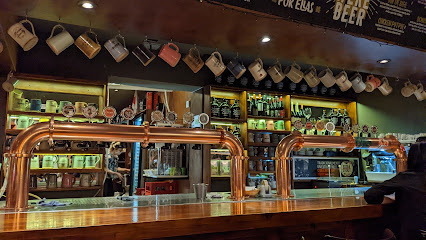
Kunstmann
Discover the essence of craft brewing at Kunstmann, San Carlos de Bariloche's premier brewpub, offering delightful beers and local cuisine.
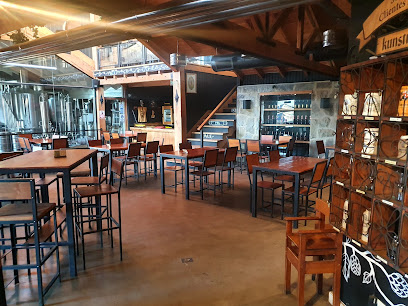
Cervecería Bachmann
Discover the best of craft beer and delicious food at Cervecería Bachmann, the heartbeat of Bariloche's brewpub scene.

Chimi Bar de Choris
Experience the best of Argentine cuisine at Chimi Bar de Choris, where delicious choripanes meet a vibrant atmosphere in Bariloche.

Wesley Brewery
Discover the essence of Argentine craft beer at Wesley Brewery, a cozy brewpub in Bariloche with unique brews and delicious food pairings.
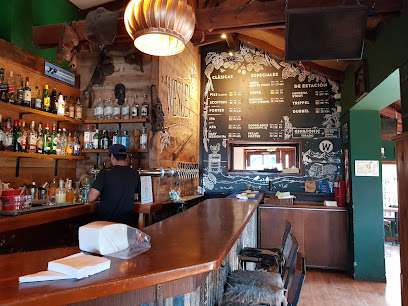
Konna Bar
Discover the vibrant brewpub experience at Konna Bar in San Carlos de Bariloche, featuring artisanal beers and delicious local cuisine.
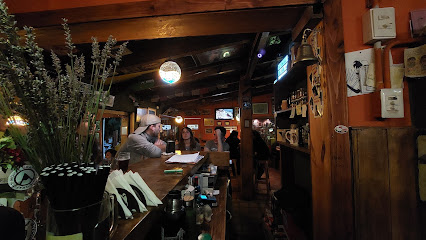
Stradibar
Discover Stradibar, Bariloche's premier brewpub, where local craft beers meet gourmet dining in a cozy atmosphere.
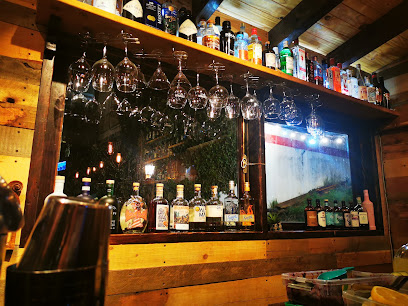
La Juana Bar Bariloche
Discover the lively ambiance of La Juana Bar in Bariloche, where great drinks and local culture come together for an unforgettable night out.
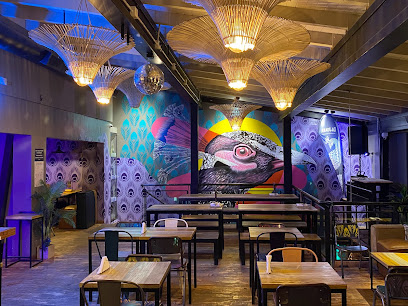
Kosten Beer Bar
Experience the best craft beers and local cuisine at Kosten Beer Bar, a vibrant brewpub in the heart of Bariloche, Argentina.
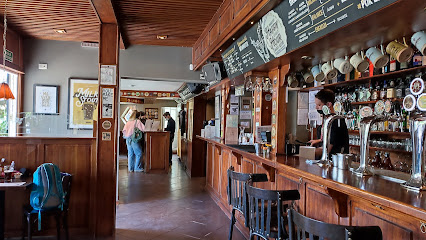
Modo Bar
Discover Modo Bar: A unique gastropub in Bariloche blending exquisite food and live music for an unforgettable night out in Patagonia.
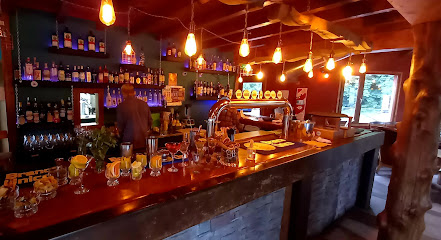
KUTRAL
Discover Kutral, a lively bar in San Carlos de Bariloche, where cocktails, live music, and vibrant ambiance meet to create unforgettable nights.

Nené Bar
Experience the vibrant nightlife at Nené Bar, where craft beers and artisanal cocktails meet a cozy atmosphere in Bariloche.
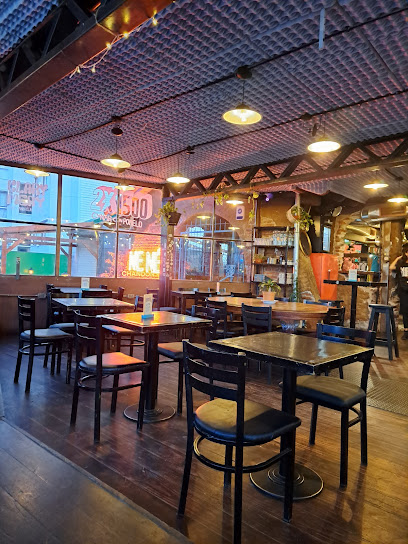
Luna Bar
Discover Luna Bar, a vibrant cocktail haven in San Carlos de Bariloche, where delicious drinks and breathtaking views await you.
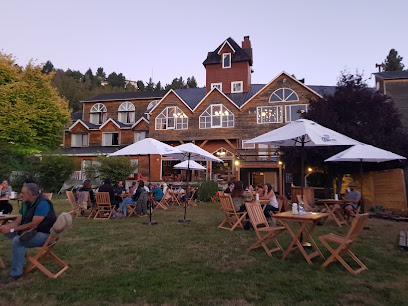
After7
Experience the vibrant nightlife at After7 in San Carlos de Bariloche, where great drinks and a fun atmosphere await you.
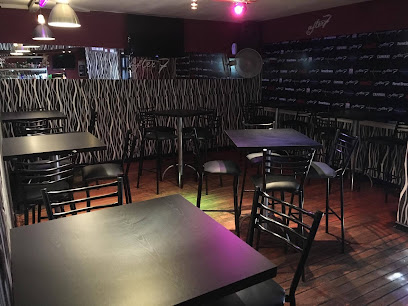
Santino Bar
Discover the vibrant nightlife of San Carlos de Bariloche at Santino Bar, where great drinks and good vibes come together.
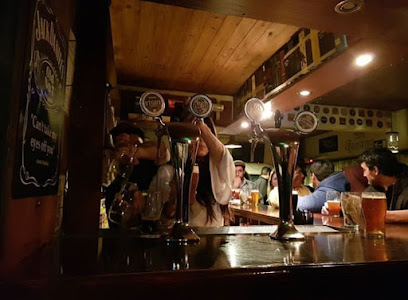
Local Phrases
-
- HelloHola
[oh-lah] - GoodbyeChau
[chow] - YesSí
[see] - NoNo
[noh] - Please/You're welcomePor favor/De nada
[por fah-vor/deh nah-dah] - Thank youGracias
[grah-see-ahs] - Excuse me/SorryPerdón
[pair-dohn] - How are you?¿Cómo estás?
[koh-moh ehs-tahs] - Fine. And you?Bien. ¿Y tú?
[bee-ehn. ee too] - Do you speak English?¿Hablas inglés?
[ah-blahs een-glays] - I don't understandNo entiendo
[noh ehn-tee-ehn-doh]
- HelloHola
-
- I'd like to see the menu, pleaseMe gustaría ver el menú, por favor
[meh goos-tah-ree-ah vehr ehl meh-noo, poor fah-vor] - I don't eat meatNo como carne
[noh koh-moh kahr-neh] - Cheers!Salud!
[sah-lood] - I would like to pay, pleaseQuisiera pagar, por favor
[kee-see-eh-rah pah-gar, poor fah-vor]
- I'd like to see the menu, pleaseMe gustaría ver el menú, por favor
-
- Help!¡Ayuda!
[ah-yoo-dah] - Go away!¡Vete!
[veh-teh] - Call the Police!¡Llama a la policía!
[yah-mah ah lah poh-lee-see-ah] - Call a doctor!¡Llama a un médico!
[yah-mah ah oon meh-dee-koh] - I'm lostEstoy perdido
[ehs-toy pair-dee-doh] - I'm illEstoy enfermo
[ehs-toy ehn-fehr-moh]
- Help!¡Ayuda!
-
- I'd like to buy...Me gustaría comprar...
[meh goos-tah-ree-ah kohm-prahr] - I'm just lookingSolo estoy mirando
[soh-loh ehs-toy mee-rahn-doh] - How much is it?¿Cuánto cuesta?
[kwan-toh kwehs-tah] - That's too expensiveEs demasiado caro
[ehs deh-mah-see-ah-doh kah-roh] - Can you lower the price?¿Puedes bajar el precio?
[pweh-dehs bah-har ehl pree-syoh]
- I'd like to buy...Me gustaría comprar...
-
- What time is it?¿Qué hora es?
[keh oh-rah ehs] - It's one o'clockEs la una
[ehs lah oo-nah] - Half past (10)Las diez y media
[lahs dee-ehs ee meh-dee-ah] - MorningMañana
[mah-nyah-nah] - AfternoonTarde
[tahr-deh] - EveningNoche
[noh-cheh] - YesterdayAyer
[ah-yehr] - TodayHoy
[oy] - TomorrowMañana
[mah-nyah-nah] - 1Uno
[oo-noh] - 2Dos
[dohs] - 3Tres
[trehs] - 4Cuatro
[kwah-troh] - 5Cinco
[seen-koh] - 6Seis
[says] - 7Siete
[syeh-teh] - 8Ocho
[oh-choh] - 9Nueve
[nweh-veh] - 10Diez
[dee-ehs]
- What time is it?¿Qué hora es?
-
- Where's a/the...?¿Dónde está...?
[dohn-deh ehs-tah] - What's the address?¿Cuál es la dirección?
[kwal ehs lah dee-rehk-syohn] - Can you show me (on the map)?¿Puedes mostrarme (en el mapa)?
[pweh-dehs mohs-trar-meh (ehn ehl mah-pah)] - When's the next (bus)?¿Cuándo es el próximo (autobús)?
[kwan-doh ehs ehl proh-see-moh (ow-toh-boos)] - A ticket (to ....)Un boleto (a ...)
[oon boh-leh-toh (ah)]
- Where's a/the...?¿Dónde está...?
History of Bariloche
-
Before the arrival of European explorers, the region of Bariloche was inhabited by indigenous peoples, primarily the Mapuche. These communities were skilled in the arts of hunting, fishing, and weaving, and they left behind a legacy of rich traditions and deep connections to the land.
-
In the mid-16th century, Spanish explorers began to venture into the region. The first recorded European to set foot near the area was Nahuel Huapi Lake in 1670, guided by Jesuit priest Nicolás Mascardi. The Jesuits established missions to convert and educate the indigenous population.
-
San Carlos de Bariloche was officially founded on May 3, 1902. The city's name combines 'San Carlos,' a tribute to early settler Carlos Wiederhold, and 'Bariloche,' derived from the Mapuche word 'Vuriloche,' meaning 'people from behind the mountain.'
-
During the late 19th and early 20th centuries, Bariloche saw an influx of European immigrants, particularly from Germany, Austria, and Switzerland. These settlers brought their architectural styles, culinary traditions, and cultural practices, which still influence the city today.
-
In the 1930s, the Argentine government began promoting Bariloche as a tourist destination. The construction of the Nahuel Huapi National Park in 1934 and the establishment of the Llao Llao Hotel in 1938 played significant roles in turning Bariloche into a premier travel destination.
-
During and after World War II, Bariloche became a haven for some German nationals. The city's alpine architecture and European flair led to speculation and rumors about the presence of Nazi fugitives, although concrete evidence remains elusive.
-
Today, Bariloche is renowned for its stunning natural scenery, outdoor recreational activities, and vibrant cultural scene. It serves as a gateway to the Andes and attracts visitors from around the world for skiing, hiking, and enjoying its famous chocolate shops and breweries.
Bariloche Essentials
-
Bariloche is located in the Argentine Patagonia, in the province of Río Negro. The most convenient way to get there is by flying into San Carlos de Bariloche Airport (BRC), which has regular flights from Buenos Aires and other major Argentine cities. Alternatively, you can take long-distance buses from Buenos Aires, Mendoza, or other regional cities, which offer a more scenic but longer journey. Driving is also an option if you prefer a road trip, but be prepared for long distances and variable road conditions.
-
Once in Bariloche, you can get around using various modes of transportation. Local buses are a cost-effective way to travel within the city and to nearby attractions. Taxis and ride-sharing services like Uber are also available. Renting a car is a popular option for those who want to explore the surrounding national parks and lakes at their own pace. Bicycles can be rented for a more eco-friendly and immersive way to see the sights.
-
The official currency in Argentina is the Argentine Peso (ARS). Credit and debit cards are widely accepted in hotels, restaurants, and shops in Bariloche. However, it is advisable to carry some cash for smaller establishments and for tipping. ATMs are available throughout the city, but be aware that they may have withdrawal limits and fees. Currency exchange services can be found at the airport, banks, and some hotels.
-
Bariloche is generally a safe destination for tourists. However, like any other tourist spot, it is important to take standard precautions. Avoid carrying large sums of cash and keep an eye on your belongings, especially in crowded places like bus terminals and markets. While there are no specific high-crime areas targeting tourists, it is always good practice to stay vigilant and avoid poorly lit areas at night.
-
In case of emergency, dial 911 for immediate assistance. Bariloche has medical facilities, including hospitals and clinics, that can handle most emergencies. It is recommended to have travel insurance that covers medical emergencies. For minor health issues, there are several pharmacies in the city where you can purchase over-the-counter medications. Be sure to carry your identification and insurance information with you at all times.
-
Fashion: Do dress in layers, as the weather can change rapidly. Avoid wearing overly flashy jewelry or expensive accessories. Religion: Do respect local customs and traditions, especially when visiting religious sites. Public Transport: Do have small change ready for bus fares. Don’t be loud or disruptive on public transport. Greetings: Do greet people with a friendly 'Hola' or 'Buen día'. A handshake is common for formal introductions. Eating & Drinking: Do try local specialties like asado and chocolate. Don’t refuse food or drink offerings, as it may be considered impolite.
-
To experience Bariloche like a local, visit the local markets and artisanal chocolate shops. Engage with locals who are often friendly and willing to share stories about the city's history and culture. Don’t miss the chance to take a boat tour on Lake Nahuel Huapi or hike in the nearby national parks. For a unique experience, try the 'Circuito Chico' scenic drive, which offers stunning views of the surrounding landscape.
Trending Landmark in Bariloche
-
Parque Nacional Nahuel Huapi
-
Confitería del Cerro Campanario
-
Manush Centro
-
Puerto Pañuelo
-
Catedral Alta Patagonia
-
La Fonda del Tío
-
Kunstmann
-
Punto Panorámico - Circuito Chico
-
El Boliche de Alberto
-
Familia Weiss
-
Centro Cívico Bariloche
-
Cathedral Our Lady of Nahuel Huapi
-
Museo del Chocolate Havanna
-
Manush km 4
-
Parque Nahuelito
Nearby Cities to Bariloche
-
Things To Do in San Carlos de Bariloche
-
Things To Do in Puerto Varas
-
Things To Do in Osorno
-
Things To Do in Pucon
-
Things To Do in Valdivia
-
Things To Do in Temuco
-
Things To Do in Concepción
-
Things To Do in Curicó
-
Things To Do in San Rafael
-
Things To Do in Rancagua
-
Things To Do in Santiago
-
Things To Do in Valparaíso
-
Things To Do in Viña del Mar
-
Things To Do in Mendoza
-
Things To Do in El Calafate














